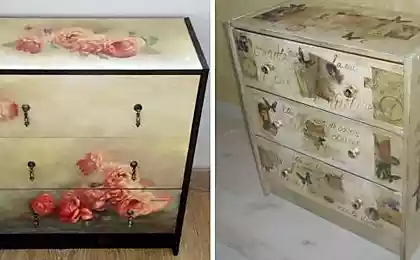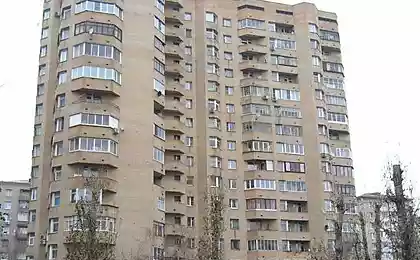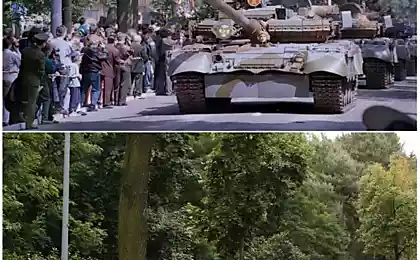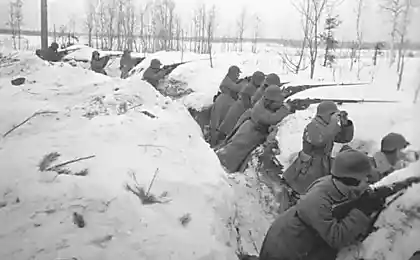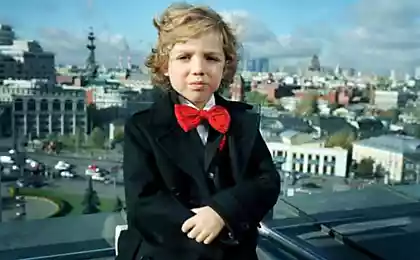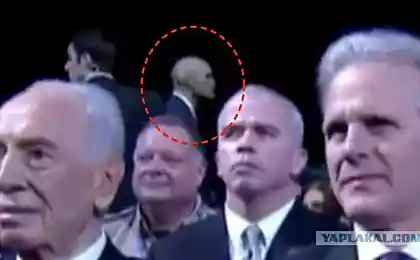2136
House of the Soviet elite (48 photos)
Houses built for the Party and the Soviet elite 20-30 years ago, look like new and are still in high demand. Even though clearly overpriced.
At its consumer qualities of apartments in the so-called Politic kommunist houses can
compete with modern housing business class, and by location, as a rule,
with houses that are considered elite. Although modern elitka much more comfortable ...
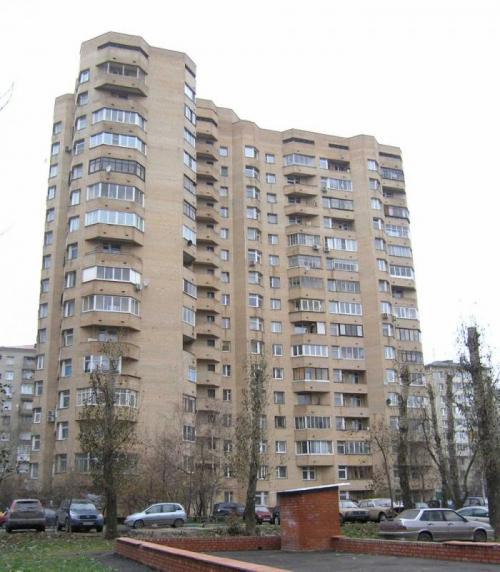
His appearance elite brick houses of the CPSU as the least chic for the Soviet era houses the Council of Ministers of the USSR Supreme Soviet of the USSR and homes for senior members of the armed forces of the USSR, the Soviet system required to approving double standards in the distribution of wealth, including housing. Until the mid 30-ies of the last century, the housing problem in Moscow, as in other large cities, has been solved mainly due to the construction of barracks.
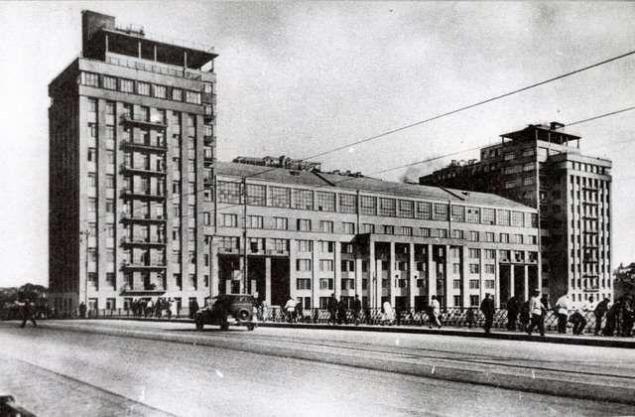
But in 1934 the Council of People's Commissars of the USSR adopted a special resolution "On the improvement of housing construction", which limits the practice of the construction of lightweight types of housing and obliges architects and builders design and build only the capital house with all the amenities, and a specific role for homes increased comfort (for example, Room in housekeeper), designed for high-ranking persons, and highly skilled professionals.

Takiedoma built in the center, and local residents were evicted to the outskirts or even outside the city. Thus, residents of houses demolished during the reconstruction of Gorky Street were evicted in cantonment town near the platform Elk Yaroslavl Railroad and as compensation to each family member was given 3 thousand. Rubles.
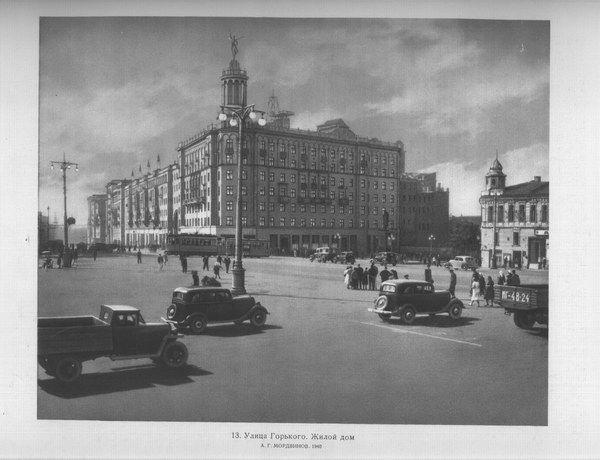
After World War II buildings were not only capital, but also pompous - architectural delight symbolized the excesses of victory and the beginning of a new, beautiful life. But in 1955, it was accepted by the Central Committee of the CPSU and the USSR Council of Ministers "On elimination of excesses in design and construction," What is considered practically all the elements of Stalinist architecture - porticos, arches, spiers, and so on. D.

The decision stated, and that the "unacceptable overestimate of the front area, corridors and other ancillary facilities." By September 1956, the architects had to develop model projects for the most cheaper housing - with low ceilings, no elevator and garbage, but always with running water and toilets. A July 31, 1956 issued a decree of the Central Committee of the CPSU "On the development of housing construction in the USSR", which marked the transition to industrial methods of construction of buildings.
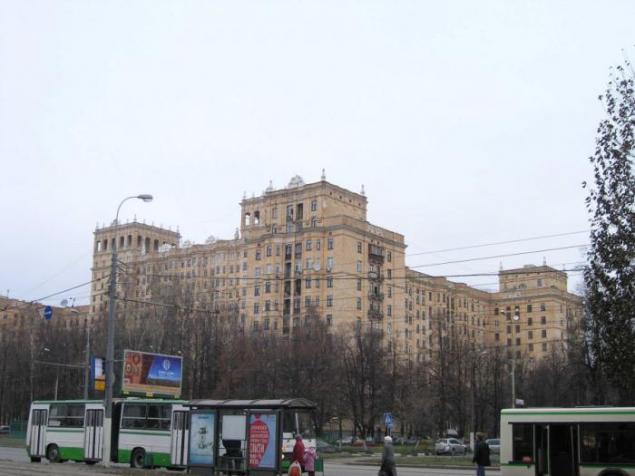
But some party functionary or staid ministry officials want to live in a "people's" building with no elevator and garbage, and even under the low ceiling? And somehow undignified party-state elite to invite guests to a close Khrushchev. This was particularly evident during the Brezhnev era. It was then, along with houses mass series Moscow began to be built brick houses with improved planning - with spacious rooms, three-meter ceilings, large kitchen, lounge and dressing.
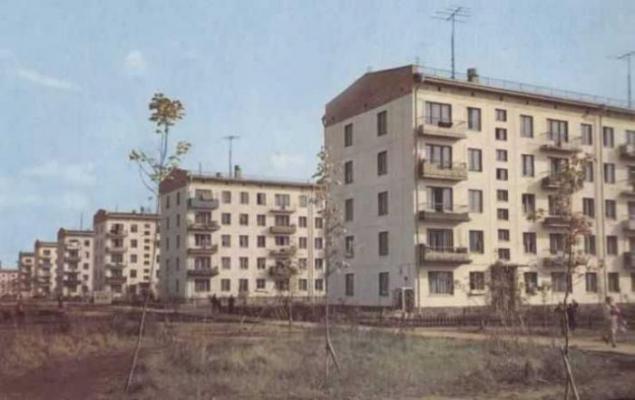
It is necessary to make a reservation for the representatives of different departments of the status of different built housing. For the representatives of the Soviet "apex" special home designed for technical staff - a common house in typical homes, but also an improved layout.
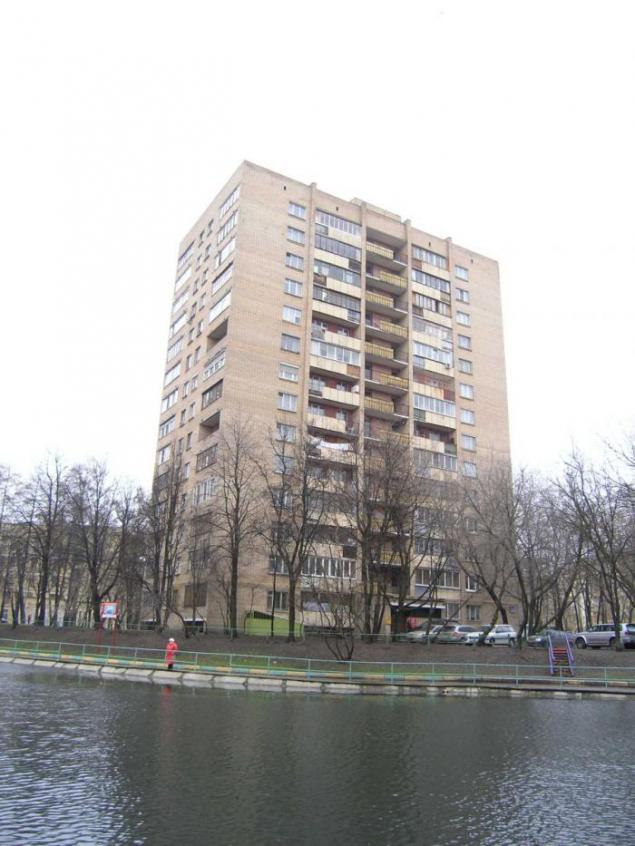
In fact, it was the first experience in the construction of houses in the capital club with a strict selection of tenants, closed infrastructure used exclusively by members of the government and their families. On the ground floor there is a bomb shelter, as rumored in some special status homes were even secret passages leading to the subway.
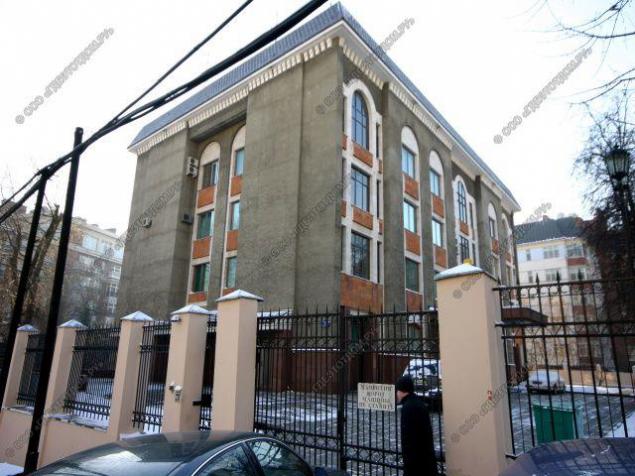
Furnished apartment top executives at public expense ceased in the 50s. However, manufactures furniture factory HOZU Administration Council of Ministers has not ceased to exist. It is made what is now called the office furniture, and also makes dining rooms, bedrooms and other headset on the orders of nomenclature, but in cash. A similar venture in 1959 and appeared in the UD CC.
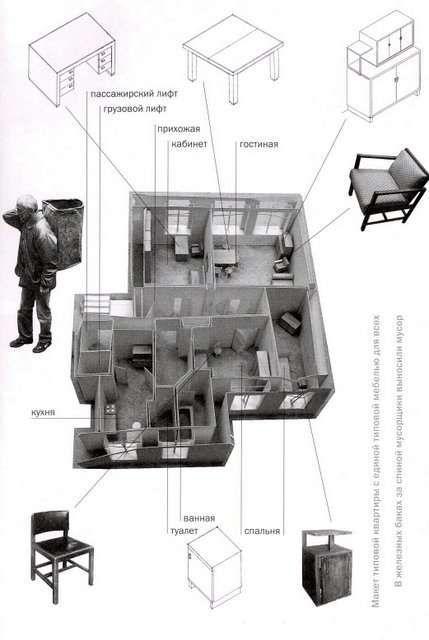
Politic kommunist home, of course, were built in the most prestigious areas of the capital. These homes are located mainly in the center - in the Arbat district, armor, clean and Patriarch's Ponds - or in prestigious areas outside the CAO - Cheryomushki, Leninsky Prospekt, Airport, close to parks and reservoirs. "There are whole neighborhoods Politic kommunist to" Belarusian "," Krasnopresnenskaya "," Kropotkin "in Krylatskoye, on" River Station ". There are houses in the suburbs. For example, in the Odintsovo district, which is adjacent to the prestigious ruble ».
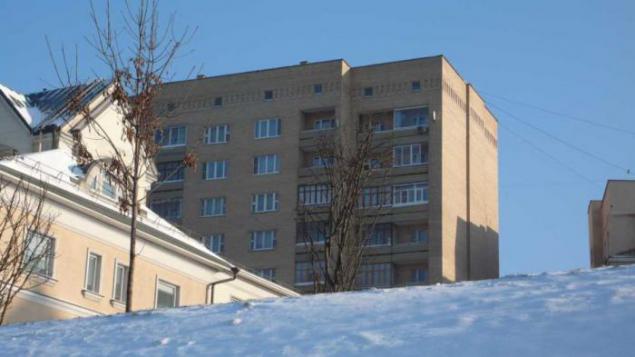
Such houses are usually built not one, sometimes built into some kind of a penalty, thereby separating domestic territories. They are mostly brick, with a ceiling of 2, 9 m. To 3.10 m., And the higher the status of the house, the higher ceilings. In the houses of the Political Bureau of the ceiling height reached 3.20 m. The houses with ceilings 2.90 m. Housed the family of Soviet generals and the Council of Ministers. Interestingly, the ceiling height is measured not by ties to tie, as is customary for SNIP, and from the ceiling to the flooring.
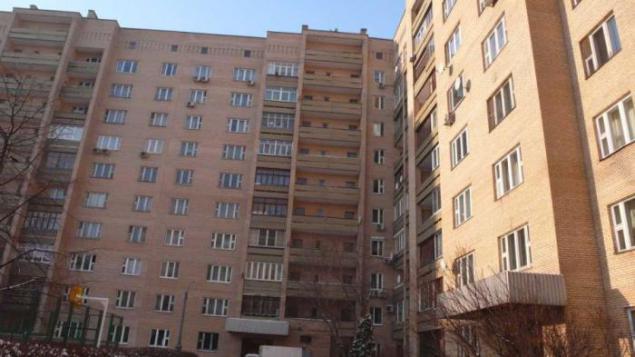
Houses are built of 12 storeys (center) and 14 (outside the center), and were equipped with elevators domestic brands, but with mirrors - a special style of the time. The houses designed large lobbies and hallways, there was certainly room for concierges to the bathroom and, as we have said, with the guards. The entrances were decorated with marble and coquina. On the lower floors were almost always rooms and apartments designed for personal security and concierge "in uniform».

In the departmental buildings housed no more than 2-3 apartments per floor. Total apartments in the departmental houses the center of Moscow from 20 to 60. There are houses, and containing more than 150 apartments. The largest building (256 apartments) is located at B. Yakimanka 26. But, in fact, it is the 3rd house interconnected. As for the apartments, their size, as well as ceiling height, correspond to the status of tenants, for which the house was built. For example, if the average size of apartments departmental ceilings is 3m., The average size of the 2-bedroom. Apartments - 75 m., 3 BR. - 105 m., 4-bedroom. - 130 m ... In 3-4 room, apartments usually has 2 bathrooms, which was very rare in those days. Kitchens usually have a size of 12 sq ...
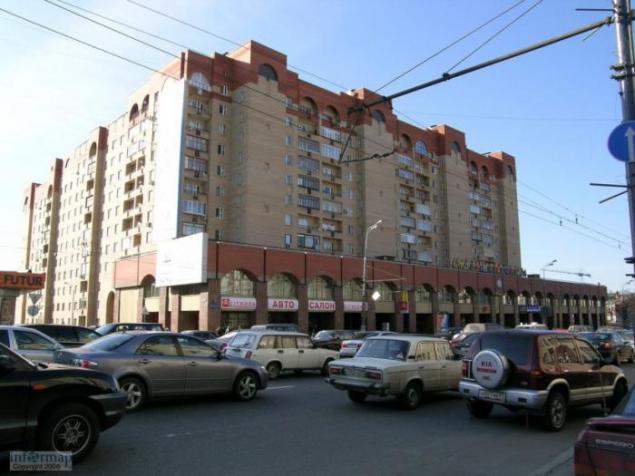
For example, two-bedroom apartment in the house of the Central Executive Committee (All-Russian Central Executive Committee) in Kuntsevo (Small Filyovskaya street, 68) - the total area of 88 square meters. m. The living area is 50 square meters. m, the kitchen - 9 square meters. m, there is a dark room, loggia and balcony ceilings - 3 m.
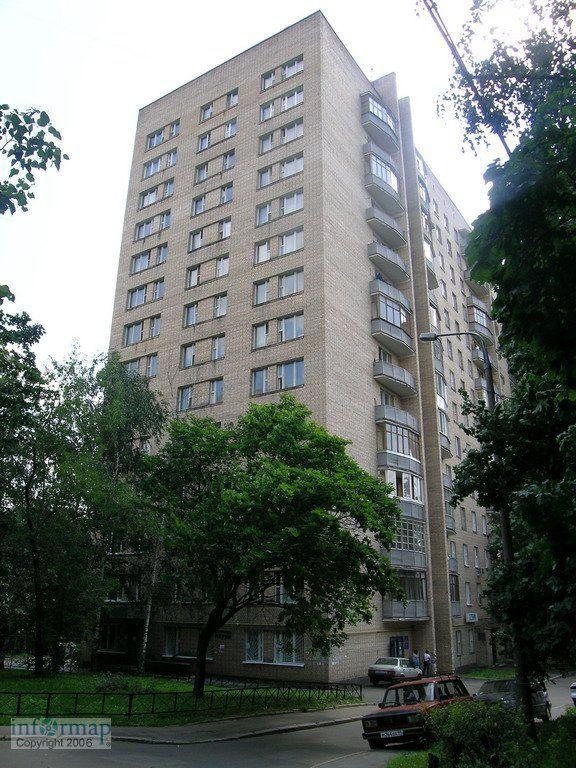
And next to the house of the CPSU (Small Filyovskaya street, 62) "treshka" has an area of 93 square meters. m, living area - 53 square meters. m, the kitchen is much larger - 13 square meters. m. More spacious apartment in the "royal village" in Cheryomushki. For example, Politic kommunist house two-room apartment has an area of 90 square meters. m, a living room - 24 square meters. m, a bedroom - 16 sq. m, kitchen - 14 sq. m, two bathrooms in the apartment. In those days an unprecedented luxury.
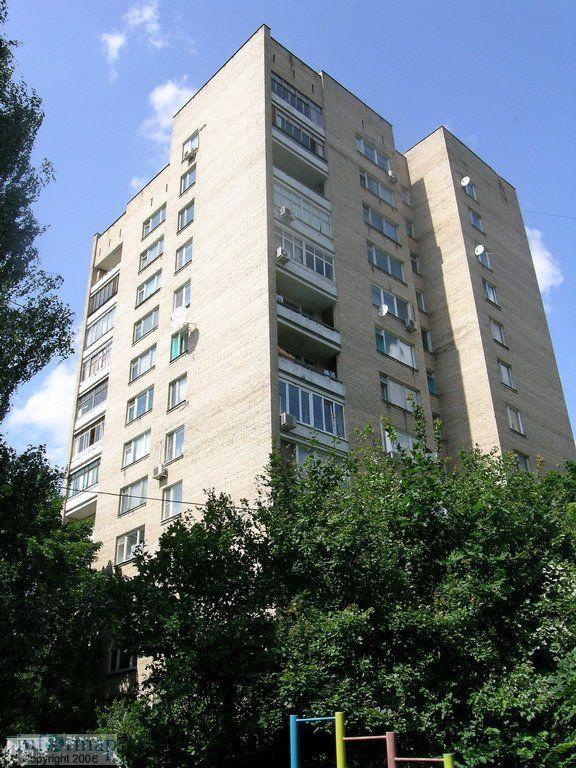
Excellent quality of construction - 50-60cm. thick brick walls, floors as a rule - of hollow plates, large panoramic windows, balconies. The main disadvantages of currently departmental houses of this period are featureless facades and the lack of underground garages.
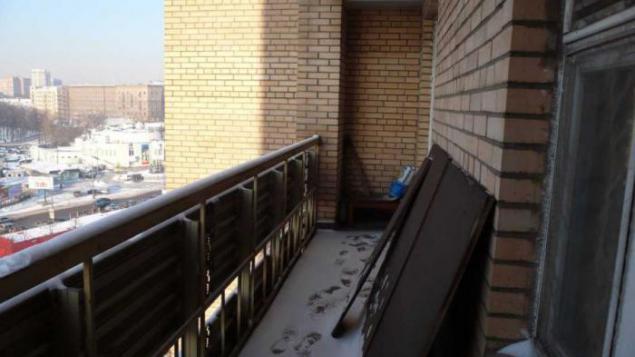
Departmental homes were built mostly from 1968 to 1982. The largest number of them were in the period from 1975 to 1980. Living on the basis of belonging to a certain officer level. Most high-ranking figures were provided apartments in the best homes that are located in the Patriarch's Ponds, for example, the house of the Central Committee on Spiridonovka, as well as a house in Grenade Alley.
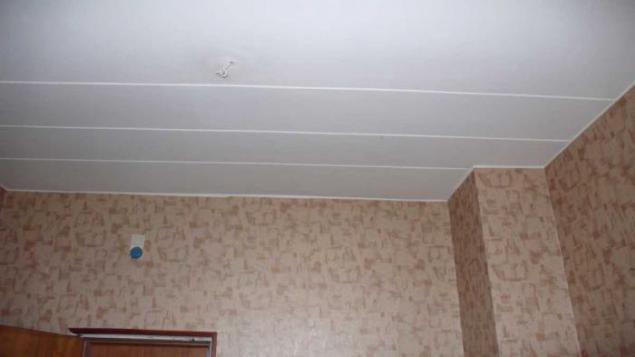
One of the most notable Politic kommunist address - street Zvenigorod, 14. This is the only built in Soviet times, a house with underground parking and a fireplace in every apartment.

Located outside the Central District neighborhoods Politic kommunist homes popularly called "royal villages". The biggest "Tsarskoye Selo" - in Kuntsevo, about 20 houses. In six houses built on the street Udaltsova and in the New Cheryomushki. In "Tsarskoye Selo" in New Cheryomushki resettled employees of the Central Committee of the CPSU, the Council of Ministers, generals. And on the street Udaltsova the house 28 apartments provide apparatus of the Supreme Soviet of the USSR, at 26 - employees of the Council of Ministers, and in the house of 30 - the party nomenclature.

At the moment, in the Central District of the former departmental homes are no more than 100. In general, it is home of the Central Committee, the Political Bureau, the Ministry of Defence and the Council of Ministers. In addition to the central district departmental homes are located in the so-called Royal villages. They can be listed.
* In Kuntsevo is about 20 homes,
* In New Cheryomushki - 6-7 homes,
* On the street Udaltsova located 6 houses;
* Outdoor Mosphilmovskaya is 4 houses, this is the so-called "general's house»;
* On the River Station (the street Lavochkin) - 4 houses.
In addition, the specks of departmental buildings in Moscow have been granted in many other areas, but their number is not great - 1-2 at home.
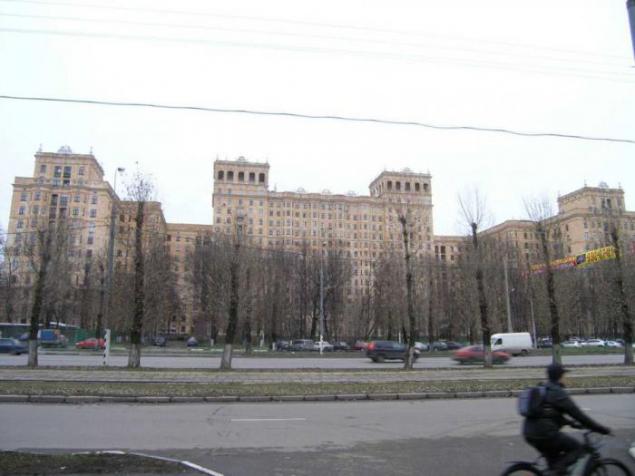
House of the Central Committee of the most outstanding representatives of departmental housing (most of them, they are more indicative). For building houses the Central Committee has always chosen the best place to modern criteria, both in the center and beyond. For example, in the area of Sretenka no house of the Central Committee, in the east of the center - the only one. On the other hand, in the Western part of the center - in the Patriarch's Ponds and the Arbat CC houses dozens. Houses are also located in the Central district of Frunze and Yakimanka.

The most resourceful sovsluzhaschie always trying to get apartments in houses built administrative department of the Central Committee. The fact was that in 1966 materials, plumbing and other equipment for these buildings were purchased abroad. And so, "the king's village" of the Central Committee of the houses were considered more royal than sovminovskie. There was also a fashion for certain areas. For example, when the house was built in the Lenin Hills CC, to move there are many top leaders, including Kosygin. But then the houses were built close to the center, and many ministers were quick to move, saying that Lenin Hills they constantly interfere with the wind. Himself Kosygin wind somehow interfered
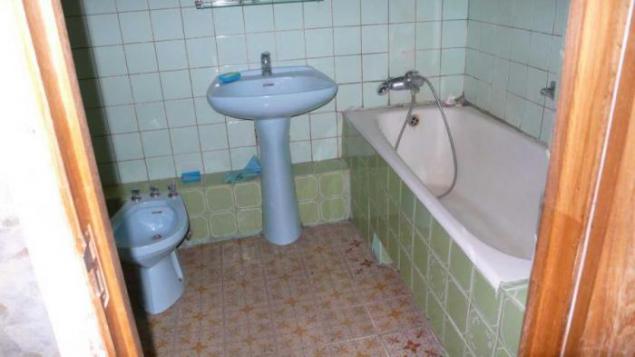
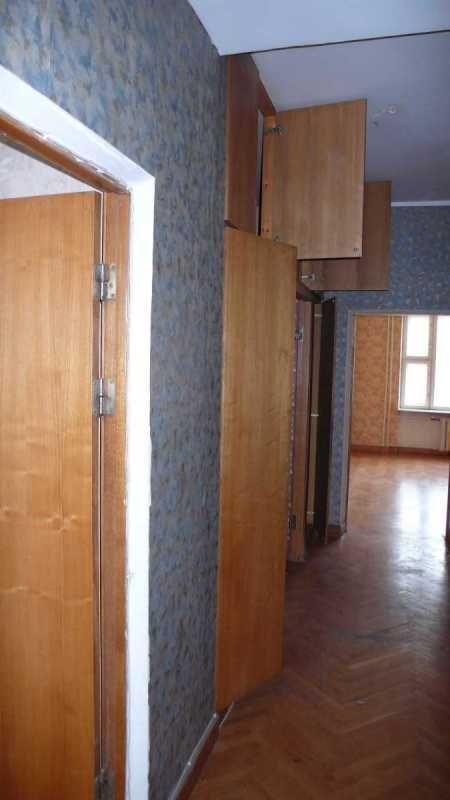
Of course, the contingent of residents departmental homes changed. Firstly, most of the settlers who provide such housing have been very "aged." Many of them died soon after the beginning of perestroika. We were widows, children and other heirs. But many are alive to this day. Sell apartments, mainly after the death of the tenant or his heirs with the aim to distribute an inheritance, or to improve their living conditions, as sharing of apartments provides a very broad options for traveling.
The most well-known Moscow TsKovki
Moscow
Grenade lane 10 Year built: 1978.
Tower as the tower, brick like a brick, but the house was built for the most Leonid Brezhnev and his entourage. Big house, architecturally like no one Politic kommunist but easily recognizable style, spread in a park area near the House receptions MFA. The spacious lobby, three elevators, a large area with old oak trees, a few warm garages in the area make this house the most significant residential project of the Brezhnev period. The apartment of the Secretary General was on the 6th floor, taking it almost entirely, and stood out among the other apartments due to the high ceilings. It is clear now: if you look at the house, one can see that the windows on the 6th floor of greater height than the adjacent top and bottom. But the secretary general, apparently ashamed to occupy an entire floor, so as not moved here. But I do not hesitate to post-1991, Mr. Khasbulatov and lives with all the amenities. The house still known as the home of Pavlov (not to be confused with a namesake in Stalingrad), named in honor of the Executive Secretary of the CPSU Central Committee George Pavlova (held this post until Nicholas Kruchina). He lived here and he jumped 6 October 1991 from the window of his apartment in the house ... for a while he lived and Mikhail Gorbachev!
B This house is also still living Konstantin Gavrilovic Kozhemyakin of "Love and Privileges»))
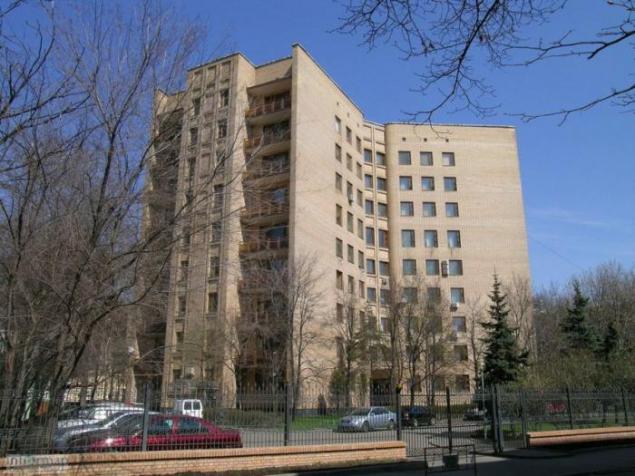
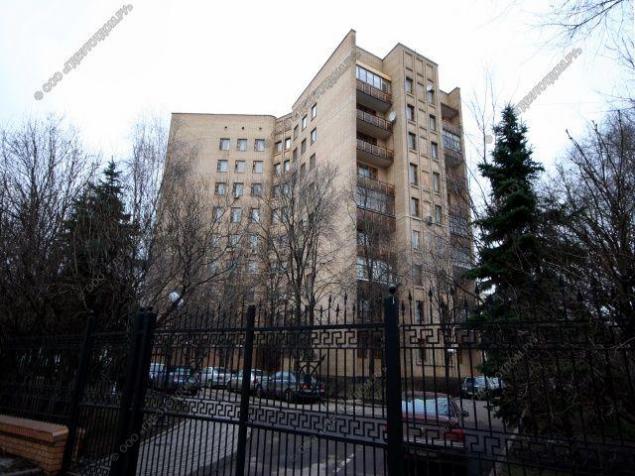
B. Bronnaya street, 19 Year built: 1969
At various times, lived here, Konstantin Chernenko and Mikhail Suslov.
The Central Committee of the improvement of living conditions occur most often on the basis of applications with the resolutions of the Central Committee secretaries. Moreover, the order of execution of requests depended on hardware Secretary weight. For example, when an application for the improvement of housing security chief wrote Suslov, the KGB, not the Central Committee, and the "gray cardinal" of the party he wrote "for" new living space has been provided during the month. With less solid resolution expectation apartments could drag on for years.
Maybe that's why, in order not to participate in the tangled intrigues apartment, the future Secretary General Konstantin Chernenko, the then head of the Department of the Central Committee, asked for an apartment for her daughter in the house of the Council of Ministers.
"He called me one day, - says former managing director of the Council of Ministers of the USSR Mikhail Smirtyukov - and says so and so - the daughter of a family must be separated. I answered him: 'No problem'. So after four months he called and asked if this is convenient. The same thing happened a few years later, when he asked her to give a bigger apartment. It was a shy man ».

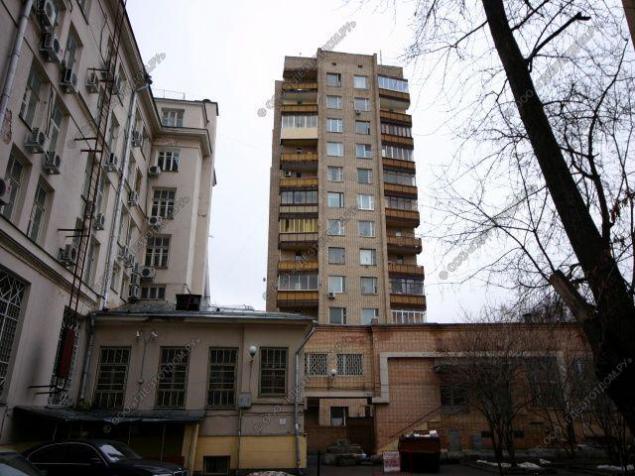
Street Spiridonovka 19
Year built: 1972
There is an apartment of Viktor Grishin, the mayor of Moscow with Leonid Brezhnev.
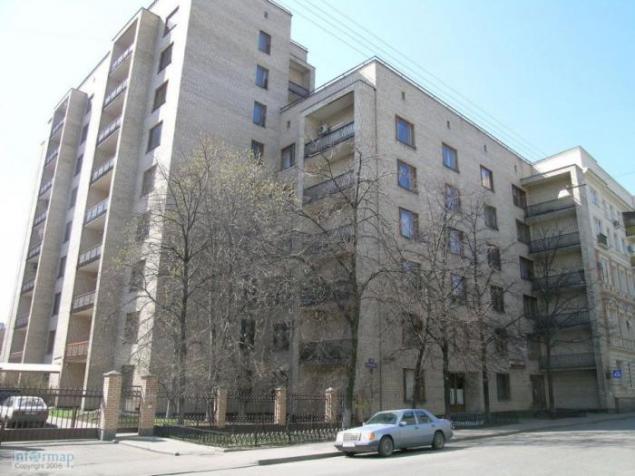
st. Kosygina 10, house where lived Mikhail Gorbachev when he was general secretary.
Year built: 1986
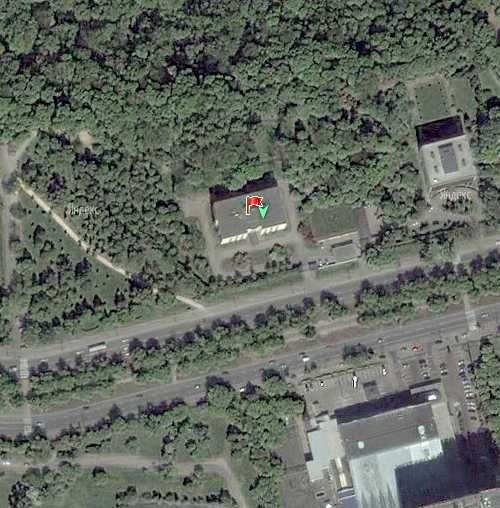
Gorbachev: When I was president, to Kosygin, where I lived - by the way, and Yazov was there, and Ligachev lived there, and somebody - I asked, what is next to the apartment, and I was told: " This communication, which need "and so on. As it turned out, when I ceased to be president. I was invited by security, my boys, "Mikhail Sergeyevich, these are the best communication." - "What is it?" Pull out of the sea like a network, so, you know, with fish, listening devices around the home of President.

Mikhail Gorbachev in December 1991, agreed with Boris Yeltsin that the breech apartment on Lenin Hills, a dacha in Barvikha Kremlin office and former president of the Soviet Union to release January 10. However, after a few days in the Kremlin, Mikhail Gorbachev called his wife and said to them that were in the apartment and asked some people in the 24 hours to vacate the premises. Things dragged almost to the landing. Instead, the family of the former president singled out the standard "three-ruble note" on the street. Kosygin, where previously lived attendants. The former president's apartment was then put up for sale (By the way, in that the breech of the presidential apartment is now inhabited by Berezovsky's former lover Marianne?). Gosdachi former president also had to release in an emergency mode.
As later wrote in his memoirs Yeltsin himself, he disgustedly rejected his offer business executives to enter the service apartment President Kosygin Street, where Gorbachev moved out ...
st. Kosygin number 8 - House, where he lived Kosygin
Year built: 1969
The most resourceful ministers and deputy chairmen Council of Ministers tried to get apartments in houses built administrative department of the Central Committee. The fact was that in 1966 materials, plumbing and other equipment for these buildings were purchased abroad. And so, "the king's village" of the Central Committee of the houses were considered more royal than sovminovskie. There was also a fashion for certain areas. For example, when the house was built in the Lenin Hills CC, to move there are many top leaders, including Kosygin. But then the houses were built close to the center, and many ministers were quick to move, saying that Lenin Hills they constantly interfere with the wind. Himself Kosygin wind somehow interfered ...
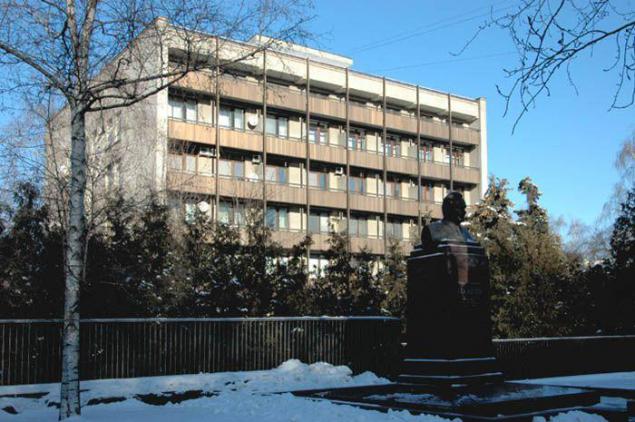
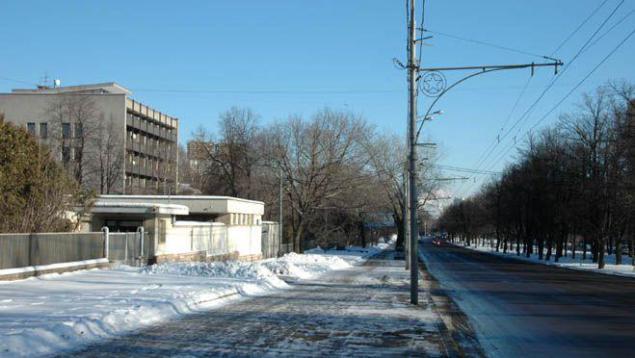
"Eltsinsky" house on 2nd Tverskaya Street, 54
Year of commissioning: 1986
"I am in Moscow. Showed apartment, the mood was not very good, so I did not care. He agreed that proposed at the Belorussky railway station, on the 2nd Tverskaya Street. Noise, dirty area. Our party leaders tend to settle in Kuntsevo, there is quiet, clean and comfortable "- wrote Boris Yeltsin a new apartment" Confessions on a given topic ».
Yeltsin lived on the fourth floor in a spacious apartment. It was believed that only four rooms - in addition to the large hall were two more bedrooms, office head of the family room, her daughter Tatiana and her husband Alexis. Eight-room of the little Bori, grandson, did not go to the expense.
By the way, in the same house he lived and Gennady Zyuganov.


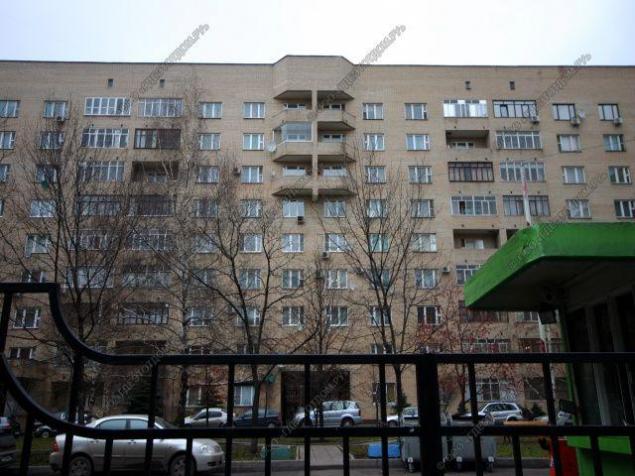
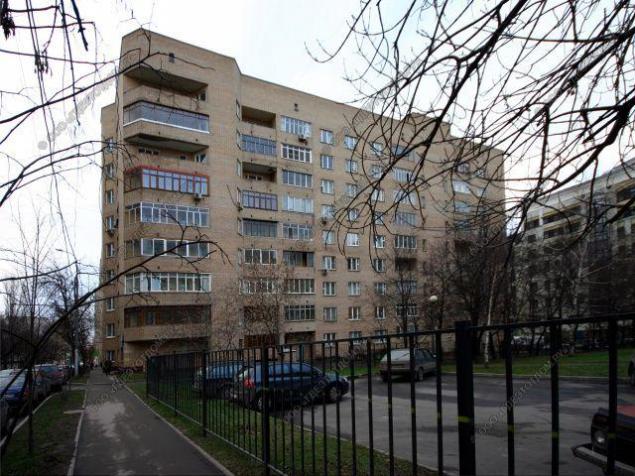
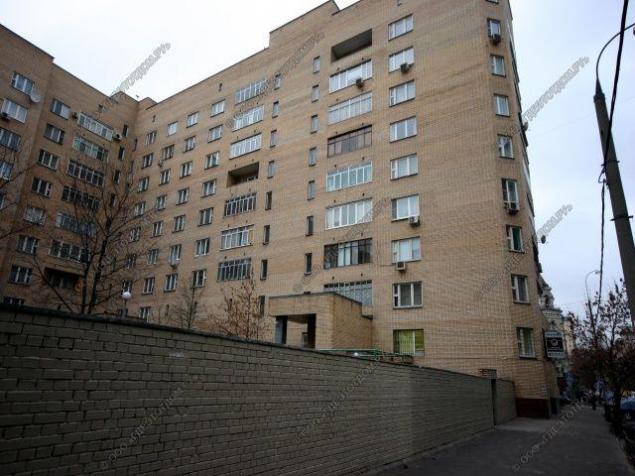
Leontief lane, 15
Year built: 1964
House N 15 in Leontief Lane was one of the central Politic kommunist address. In the house there is a plaque in honor of the famous residents. There are plaques Soviet Defense Minister Dmitry Ustinov and Minister of Finance of the USSR Vasily Garbuzova.
Source
At its consumer qualities of apartments in the so-called Politic kommunist houses can
compete with modern housing business class, and by location, as a rule,
with houses that are considered elite. Although modern elitka much more comfortable ...

His appearance elite brick houses of the CPSU as the least chic for the Soviet era houses the Council of Ministers of the USSR Supreme Soviet of the USSR and homes for senior members of the armed forces of the USSR, the Soviet system required to approving double standards in the distribution of wealth, including housing. Until the mid 30-ies of the last century, the housing problem in Moscow, as in other large cities, has been solved mainly due to the construction of barracks.

But in 1934 the Council of People's Commissars of the USSR adopted a special resolution "On the improvement of housing construction", which limits the practice of the construction of lightweight types of housing and obliges architects and builders design and build only the capital house with all the amenities, and a specific role for homes increased comfort (for example, Room in housekeeper), designed for high-ranking persons, and highly skilled professionals.

Takiedoma built in the center, and local residents were evicted to the outskirts or even outside the city. Thus, residents of houses demolished during the reconstruction of Gorky Street were evicted in cantonment town near the platform Elk Yaroslavl Railroad and as compensation to each family member was given 3 thousand. Rubles.

After World War II buildings were not only capital, but also pompous - architectural delight symbolized the excesses of victory and the beginning of a new, beautiful life. But in 1955, it was accepted by the Central Committee of the CPSU and the USSR Council of Ministers "On elimination of excesses in design and construction," What is considered practically all the elements of Stalinist architecture - porticos, arches, spiers, and so on. D.

The decision stated, and that the "unacceptable overestimate of the front area, corridors and other ancillary facilities." By September 1956, the architects had to develop model projects for the most cheaper housing - with low ceilings, no elevator and garbage, but always with running water and toilets. A July 31, 1956 issued a decree of the Central Committee of the CPSU "On the development of housing construction in the USSR", which marked the transition to industrial methods of construction of buildings.

But some party functionary or staid ministry officials want to live in a "people's" building with no elevator and garbage, and even under the low ceiling? And somehow undignified party-state elite to invite guests to a close Khrushchev. This was particularly evident during the Brezhnev era. It was then, along with houses mass series Moscow began to be built brick houses with improved planning - with spacious rooms, three-meter ceilings, large kitchen, lounge and dressing.

It is necessary to make a reservation for the representatives of different departments of the status of different built housing. For the representatives of the Soviet "apex" special home designed for technical staff - a common house in typical homes, but also an improved layout.

In fact, it was the first experience in the construction of houses in the capital club with a strict selection of tenants, closed infrastructure used exclusively by members of the government and their families. On the ground floor there is a bomb shelter, as rumored in some special status homes were even secret passages leading to the subway.

Furnished apartment top executives at public expense ceased in the 50s. However, manufactures furniture factory HOZU Administration Council of Ministers has not ceased to exist. It is made what is now called the office furniture, and also makes dining rooms, bedrooms and other headset on the orders of nomenclature, but in cash. A similar venture in 1959 and appeared in the UD CC.

Politic kommunist home, of course, were built in the most prestigious areas of the capital. These homes are located mainly in the center - in the Arbat district, armor, clean and Patriarch's Ponds - or in prestigious areas outside the CAO - Cheryomushki, Leninsky Prospekt, Airport, close to parks and reservoirs. "There are whole neighborhoods Politic kommunist to" Belarusian "," Krasnopresnenskaya "," Kropotkin "in Krylatskoye, on" River Station ". There are houses in the suburbs. For example, in the Odintsovo district, which is adjacent to the prestigious ruble ».

Such houses are usually built not one, sometimes built into some kind of a penalty, thereby separating domestic territories. They are mostly brick, with a ceiling of 2, 9 m. To 3.10 m., And the higher the status of the house, the higher ceilings. In the houses of the Political Bureau of the ceiling height reached 3.20 m. The houses with ceilings 2.90 m. Housed the family of Soviet generals and the Council of Ministers. Interestingly, the ceiling height is measured not by ties to tie, as is customary for SNIP, and from the ceiling to the flooring.

Houses are built of 12 storeys (center) and 14 (outside the center), and were equipped with elevators domestic brands, but with mirrors - a special style of the time. The houses designed large lobbies and hallways, there was certainly room for concierges to the bathroom and, as we have said, with the guards. The entrances were decorated with marble and coquina. On the lower floors were almost always rooms and apartments designed for personal security and concierge "in uniform».

In the departmental buildings housed no more than 2-3 apartments per floor. Total apartments in the departmental houses the center of Moscow from 20 to 60. There are houses, and containing more than 150 apartments. The largest building (256 apartments) is located at B. Yakimanka 26. But, in fact, it is the 3rd house interconnected. As for the apartments, their size, as well as ceiling height, correspond to the status of tenants, for which the house was built. For example, if the average size of apartments departmental ceilings is 3m., The average size of the 2-bedroom. Apartments - 75 m., 3 BR. - 105 m., 4-bedroom. - 130 m ... In 3-4 room, apartments usually has 2 bathrooms, which was very rare in those days. Kitchens usually have a size of 12 sq ...

For example, two-bedroom apartment in the house of the Central Executive Committee (All-Russian Central Executive Committee) in Kuntsevo (Small Filyovskaya street, 68) - the total area of 88 square meters. m. The living area is 50 square meters. m, the kitchen - 9 square meters. m, there is a dark room, loggia and balcony ceilings - 3 m.

And next to the house of the CPSU (Small Filyovskaya street, 62) "treshka" has an area of 93 square meters. m, living area - 53 square meters. m, the kitchen is much larger - 13 square meters. m. More spacious apartment in the "royal village" in Cheryomushki. For example, Politic kommunist house two-room apartment has an area of 90 square meters. m, a living room - 24 square meters. m, a bedroom - 16 sq. m, kitchen - 14 sq. m, two bathrooms in the apartment. In those days an unprecedented luxury.

Excellent quality of construction - 50-60cm. thick brick walls, floors as a rule - of hollow plates, large panoramic windows, balconies. The main disadvantages of currently departmental houses of this period are featureless facades and the lack of underground garages.

Departmental homes were built mostly from 1968 to 1982. The largest number of them were in the period from 1975 to 1980. Living on the basis of belonging to a certain officer level. Most high-ranking figures were provided apartments in the best homes that are located in the Patriarch's Ponds, for example, the house of the Central Committee on Spiridonovka, as well as a house in Grenade Alley.

One of the most notable Politic kommunist address - street Zvenigorod, 14. This is the only built in Soviet times, a house with underground parking and a fireplace in every apartment.

Located outside the Central District neighborhoods Politic kommunist homes popularly called "royal villages". The biggest "Tsarskoye Selo" - in Kuntsevo, about 20 houses. In six houses built on the street Udaltsova and in the New Cheryomushki. In "Tsarskoye Selo" in New Cheryomushki resettled employees of the Central Committee of the CPSU, the Council of Ministers, generals. And on the street Udaltsova the house 28 apartments provide apparatus of the Supreme Soviet of the USSR, at 26 - employees of the Council of Ministers, and in the house of 30 - the party nomenclature.

At the moment, in the Central District of the former departmental homes are no more than 100. In general, it is home of the Central Committee, the Political Bureau, the Ministry of Defence and the Council of Ministers. In addition to the central district departmental homes are located in the so-called Royal villages. They can be listed.
* In Kuntsevo is about 20 homes,
* In New Cheryomushki - 6-7 homes,
* On the street Udaltsova located 6 houses;
* Outdoor Mosphilmovskaya is 4 houses, this is the so-called "general's house»;
* On the River Station (the street Lavochkin) - 4 houses.
In addition, the specks of departmental buildings in Moscow have been granted in many other areas, but their number is not great - 1-2 at home.

House of the Central Committee of the most outstanding representatives of departmental housing (most of them, they are more indicative). For building houses the Central Committee has always chosen the best place to modern criteria, both in the center and beyond. For example, in the area of Sretenka no house of the Central Committee, in the east of the center - the only one. On the other hand, in the Western part of the center - in the Patriarch's Ponds and the Arbat CC houses dozens. Houses are also located in the Central district of Frunze and Yakimanka.

The most resourceful sovsluzhaschie always trying to get apartments in houses built administrative department of the Central Committee. The fact was that in 1966 materials, plumbing and other equipment for these buildings were purchased abroad. And so, "the king's village" of the Central Committee of the houses were considered more royal than sovminovskie. There was also a fashion for certain areas. For example, when the house was built in the Lenin Hills CC, to move there are many top leaders, including Kosygin. But then the houses were built close to the center, and many ministers were quick to move, saying that Lenin Hills they constantly interfere with the wind. Himself Kosygin wind somehow interfered


Of course, the contingent of residents departmental homes changed. Firstly, most of the settlers who provide such housing have been very "aged." Many of them died soon after the beginning of perestroika. We were widows, children and other heirs. But many are alive to this day. Sell apartments, mainly after the death of the tenant or his heirs with the aim to distribute an inheritance, or to improve their living conditions, as sharing of apartments provides a very broad options for traveling.
The most well-known Moscow TsKovki
Moscow
Grenade lane 10 Year built: 1978.
Tower as the tower, brick like a brick, but the house was built for the most Leonid Brezhnev and his entourage. Big house, architecturally like no one Politic kommunist but easily recognizable style, spread in a park area near the House receptions MFA. The spacious lobby, three elevators, a large area with old oak trees, a few warm garages in the area make this house the most significant residential project of the Brezhnev period. The apartment of the Secretary General was on the 6th floor, taking it almost entirely, and stood out among the other apartments due to the high ceilings. It is clear now: if you look at the house, one can see that the windows on the 6th floor of greater height than the adjacent top and bottom. But the secretary general, apparently ashamed to occupy an entire floor, so as not moved here. But I do not hesitate to post-1991, Mr. Khasbulatov and lives with all the amenities. The house still known as the home of Pavlov (not to be confused with a namesake in Stalingrad), named in honor of the Executive Secretary of the CPSU Central Committee George Pavlova (held this post until Nicholas Kruchina). He lived here and he jumped 6 October 1991 from the window of his apartment in the house ... for a while he lived and Mikhail Gorbachev!
B This house is also still living Konstantin Gavrilovic Kozhemyakin of "Love and Privileges»))


B. Bronnaya street, 19 Year built: 1969
At various times, lived here, Konstantin Chernenko and Mikhail Suslov.
The Central Committee of the improvement of living conditions occur most often on the basis of applications with the resolutions of the Central Committee secretaries. Moreover, the order of execution of requests depended on hardware Secretary weight. For example, when an application for the improvement of housing security chief wrote Suslov, the KGB, not the Central Committee, and the "gray cardinal" of the party he wrote "for" new living space has been provided during the month. With less solid resolution expectation apartments could drag on for years.
Maybe that's why, in order not to participate in the tangled intrigues apartment, the future Secretary General Konstantin Chernenko, the then head of the Department of the Central Committee, asked for an apartment for her daughter in the house of the Council of Ministers.
"He called me one day, - says former managing director of the Council of Ministers of the USSR Mikhail Smirtyukov - and says so and so - the daughter of a family must be separated. I answered him: 'No problem'. So after four months he called and asked if this is convenient. The same thing happened a few years later, when he asked her to give a bigger apartment. It was a shy man ».


Street Spiridonovka 19
Year built: 1972
There is an apartment of Viktor Grishin, the mayor of Moscow with Leonid Brezhnev.

st. Kosygina 10, house where lived Mikhail Gorbachev when he was general secretary.
Year built: 1986

Gorbachev: When I was president, to Kosygin, where I lived - by the way, and Yazov was there, and Ligachev lived there, and somebody - I asked, what is next to the apartment, and I was told: " This communication, which need "and so on. As it turned out, when I ceased to be president. I was invited by security, my boys, "Mikhail Sergeyevich, these are the best communication." - "What is it?" Pull out of the sea like a network, so, you know, with fish, listening devices around the home of President.

Mikhail Gorbachev in December 1991, agreed with Boris Yeltsin that the breech apartment on Lenin Hills, a dacha in Barvikha Kremlin office and former president of the Soviet Union to release January 10. However, after a few days in the Kremlin, Mikhail Gorbachev called his wife and said to them that were in the apartment and asked some people in the 24 hours to vacate the premises. Things dragged almost to the landing. Instead, the family of the former president singled out the standard "three-ruble note" on the street. Kosygin, where previously lived attendants. The former president's apartment was then put up for sale (By the way, in that the breech of the presidential apartment is now inhabited by Berezovsky's former lover Marianne?). Gosdachi former president also had to release in an emergency mode.
As later wrote in his memoirs Yeltsin himself, he disgustedly rejected his offer business executives to enter the service apartment President Kosygin Street, where Gorbachev moved out ...
st. Kosygin number 8 - House, where he lived Kosygin
Year built: 1969
The most resourceful ministers and deputy chairmen Council of Ministers tried to get apartments in houses built administrative department of the Central Committee. The fact was that in 1966 materials, plumbing and other equipment for these buildings were purchased abroad. And so, "the king's village" of the Central Committee of the houses were considered more royal than sovminovskie. There was also a fashion for certain areas. For example, when the house was built in the Lenin Hills CC, to move there are many top leaders, including Kosygin. But then the houses were built close to the center, and many ministers were quick to move, saying that Lenin Hills they constantly interfere with the wind. Himself Kosygin wind somehow interfered ...


"Eltsinsky" house on 2nd Tverskaya Street, 54
Year of commissioning: 1986
"I am in Moscow. Showed apartment, the mood was not very good, so I did not care. He agreed that proposed at the Belorussky railway station, on the 2nd Tverskaya Street. Noise, dirty area. Our party leaders tend to settle in Kuntsevo, there is quiet, clean and comfortable "- wrote Boris Yeltsin a new apartment" Confessions on a given topic ».
Yeltsin lived on the fourth floor in a spacious apartment. It was believed that only four rooms - in addition to the large hall were two more bedrooms, office head of the family room, her daughter Tatiana and her husband Alexis. Eight-room of the little Bori, grandson, did not go to the expense.
By the way, in the same house he lived and Gennady Zyuganov.





Leontief lane, 15
Year built: 1964
House N 15 in Leontief Lane was one of the central Politic kommunist address. In the house there is a plaque in honor of the famous residents. There are plaques Soviet Defense Minister Dmitry Ustinov and Minister of Finance of the USSR Vasily Garbuzova.
Source





